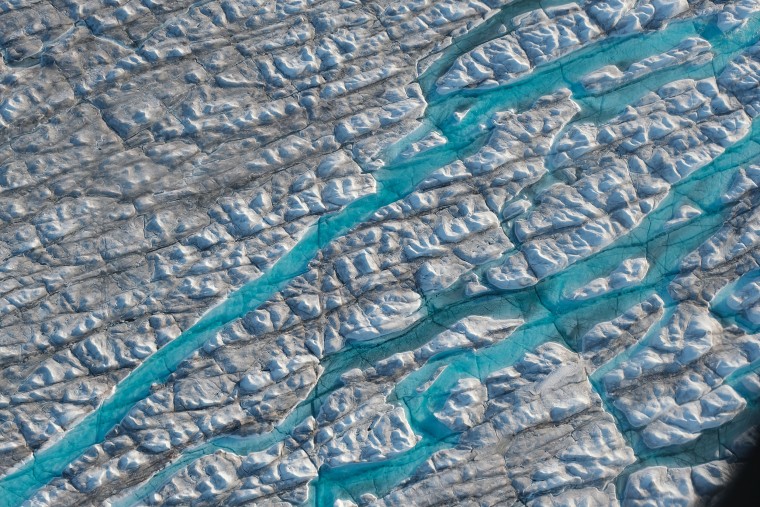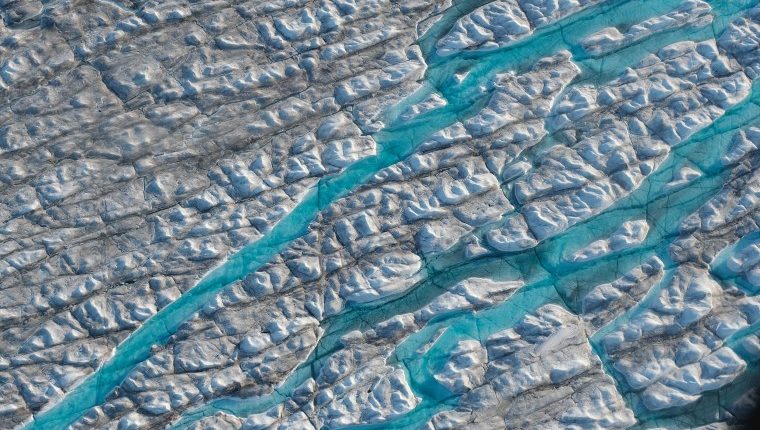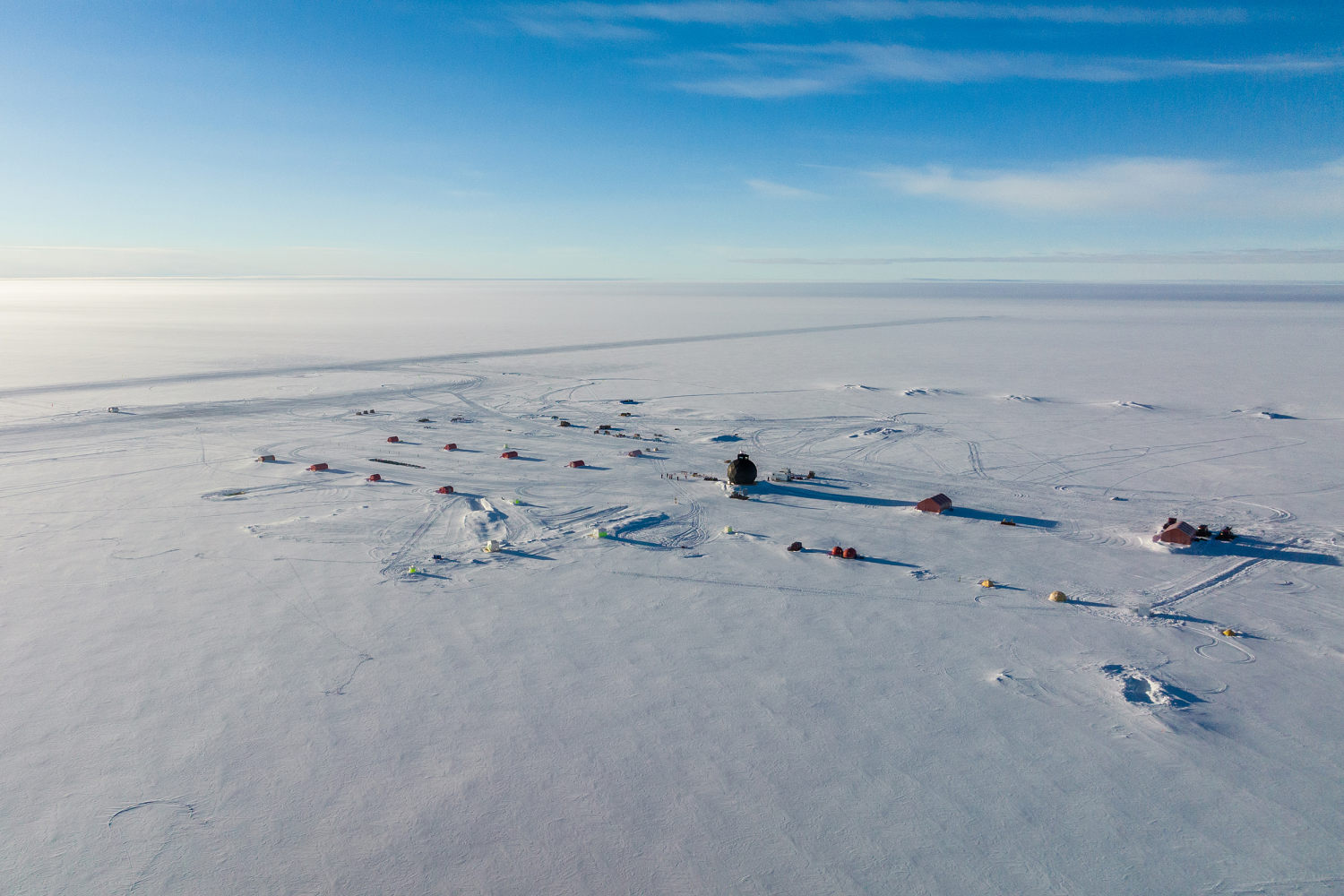New research suggests the Greenland ice sheet is on track to cross a critical threshold that could cause runaway melting, but that it’s also possible the threshold will be crossed temporarily, cooling down the planet and ultimately returning the ice sheet to a stable state.
The findings, published Wednesday in the journal Nature, underscore the importance of limiting the planet’s warming to 1.5 degrees Celsius (about 2.7 Fahrenheit) — or returning to that level, or below, as quickly as possible if humanity exceeds it.
“If we change the temperature back fast enough, we don’t necessarily commit to a system change,” Nils Bochow, a climate scientist at the Arctic University of Norway in Tromsø and the lead author of the study, said in an interview. “We have time to reverse temperatures from this runaway effect.”
The Greenland ice sheet is one of more than a dozen theoretical climate tipping points — rapid, irreversible or abrupt changes — that keep some scientists up at night. And the findings, while alarming, add to a drumbeat refrain from many climate advocates: Urgency is essential, but it’s not too late to avoid the worst of climate change.

The research suggests the critical threshold for the Greenland ice sheet is between 1.7 and 2.3 degrees C of global warming. Bochow said humanity would have 100 years — perhaps more — to cool down and avoid locking in positive feedbacks that would intensify Greenland’s melting. He said that crossing the threshold, even temporarily, would likely cause several meters of sea level rise, but it would still be possible to stabilize the ice sheet.
Benjamin Keisling, an assistant research professor at the University of Texas Institute for Geophysics, who was not involved in the research, said the ice sheet’s size gives humanity a chance to shift course.
“These systems are really complex and because ice sheets like Greenland are so big, in some ways they’re sluggish to changes,” he said. “It’s not something you can melt over the course of a year or decade or century. That actually buys you some time.”
Scientists think the Greenland ice sheet, if melted completely, would contribute more than 7 meters (about 23 feet) of sea level rise to the world’s oceans. Melting a large portion of that ice sheet would reshape coastlines and societies in a process that would take hundreds or perhaps thousands of years.
World leaders are struggling to cut fossil fuels from their economies, and they remain off pace on goals to limit warming to levels considered safer and more tolerable during international climate negotiations. A 2022 U,N, report found the planet was on track to warm about 2.8 C above preindustrial times by 2100.
Under global leaders’ most ambitious aims, the world will emit enough greenhouse gases to raise temperatures above 1.5 degrees C above preindustrial times, before cooling and stabilizing around that mark.
This study describes, for the Greenland ice sheet, what researchers think could happen in an “overshoot” emissions scenario, in which humanity crosses a so-called tipping point but ultimately reins in greenhouse gases and cools the planet.
Twila Moon, the deputy lead scientist at National Snow and Ice Data Center in Colorado, said the findings were not surprising and reflected patterns observed by other researchers who have modeled the behavior of the Greenland ice sheet.
Moon, who was not involved in the study, said it did a nice job showing that “even if there’s a temperature offshoot, how quickly we can come back” and that climate action will remain meaningful even if world leaders miss their aims — a fate that looks increasingly realistic.
“This is a transition we must take, as humanity. And even if we don’t reach our most aspirational target, every tenth of a degree is really going to matter,” she said about reducing greenhouse gas emissions. “It’s valuable to be thinking about overshoot scenarios right now.”
The Greenland ice sheet is already on a prolonged path of decline. It has lost mass every year since 1998, Moon said. Over the past 20 years, it has lost the equivalent of 3.4 Olympic swimming pools of freshwater, on average, each second.
The ice sheet is losing mass as icebergs calve into the ocean and also because of summertime surface melt, which is a response to warmer air temperatures.
More than 20% of sea level rise documented by scientists since 2002 has been caused by ice sheet melt in Greenland, according to the Nature study. Greenland’s contribution to sea level rise will only grow as global average temperatures warm, Moon said. Sea level rise can cause coastal erosion, flooding and saltwater inundation of freshwater drinking systems, among other problems.
Action now will reduce the impact of sea level rise for future generations.
“Sea level rise for the next couple of decades is pretty baked into the system based on our past emissions. Where we see the influences of our actions today is in the 2060s, 2070s and beyond,” Moon said.
Source: | This article originally belongs to Nbcnews.com










